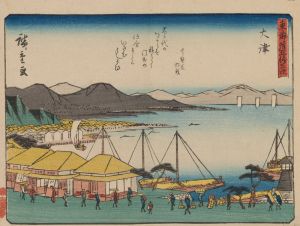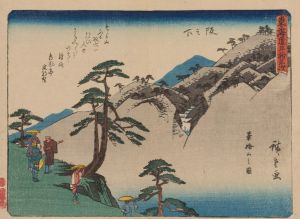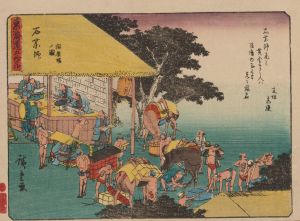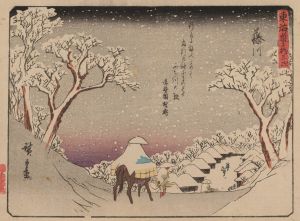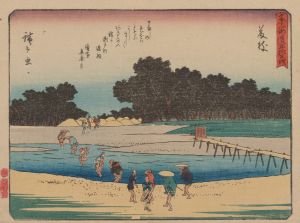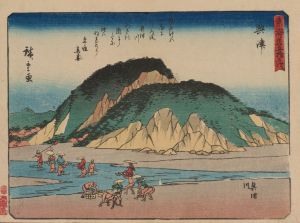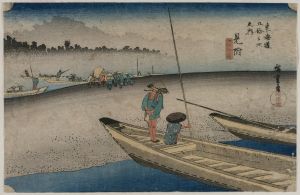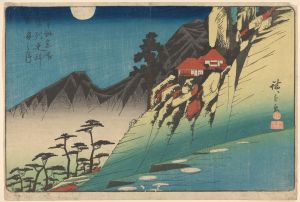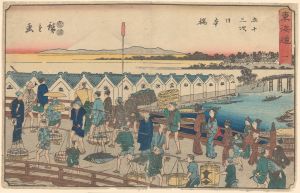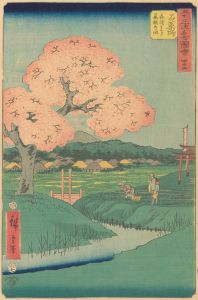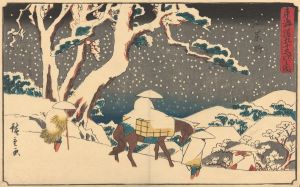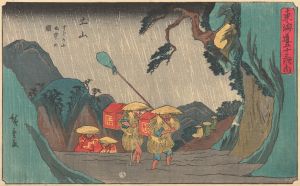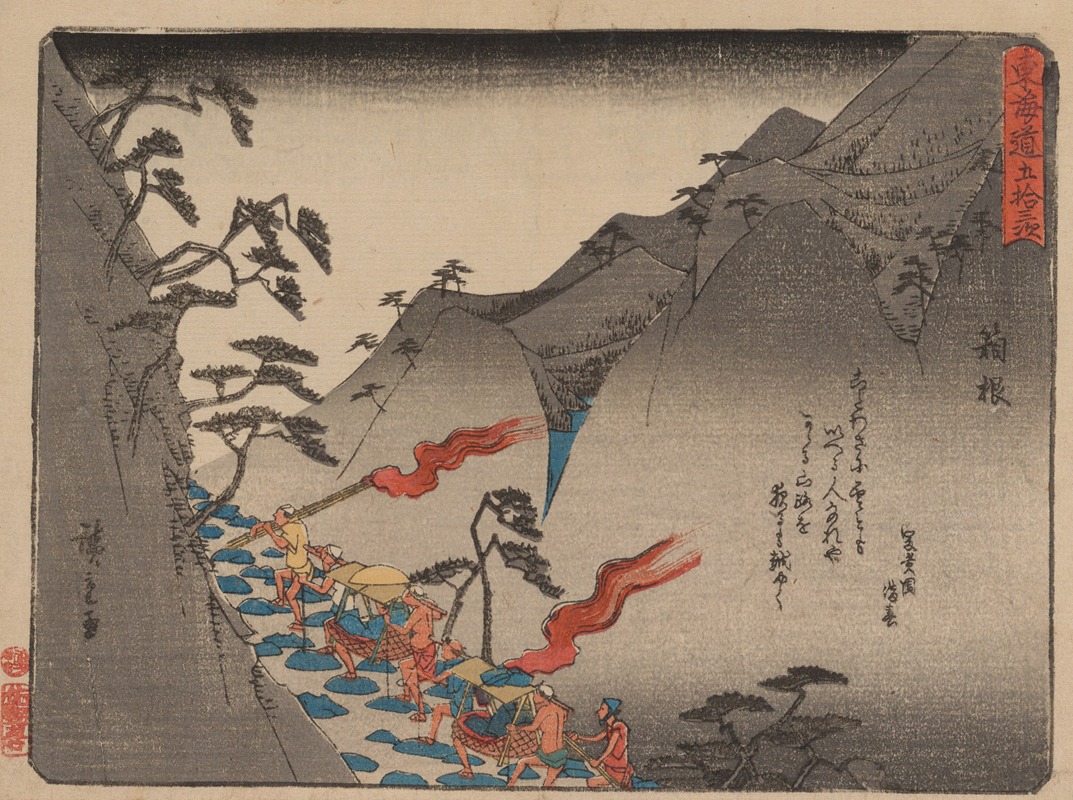
Tokaido gojusantsugi, Pl.11
A hand-painted replica of Andō Hiroshige’s masterpiece Tokaido gojusantsugi, Pl.11, meticulously crafted by professional artists to capture the true essence of the original. Each piece is created with museum-quality canvas and rare mineral pigments, carefully painted by experienced artists with delicate brushstrokes and rich, layered colors to perfectly recreate the texture of the original artwork. Unlike machine-printed reproductions, this hand-painted version brings the painting to life, infused with the artist’s emotions and skill in every stroke. Whether for personal collection or home decoration, it instantly elevates the artistic atmosphere of any space.
Andō Hiroshige, a renowned Japanese ukiyo-e artist of the Edo period, is celebrated for his landscape prints and depictions of the Tōkaidō, a vital coastal route connecting Edo (modern-day Tokyo) with Kyoto. One of his most famous series is "The Fifty-three Stations of the Tōkaidō" (Tōkaidō Gojūsan-tsugi), which consists of 55 woodblock prints, including the starting point of Nihonbashi in Edo and the endpoint in Kyoto, along with the 53 stations in between.
Plate 11 of this series, often referred to as "Hakone" or "Hakone-juku," represents the eleventh station along the Tōkaidō. Hakone was known for its challenging mountainous terrain and was a significant checkpoint during the Edo period. This particular print captures the essence of Hakone's rugged landscape, which was both a natural barrier and a scenic marvel for travelers of the time.
Hiroshige's depiction of Hakone in Plate 11 is characterized by its dynamic composition and use of perspective, which were innovative for the period. The print typically features travelers navigating the steep and winding paths of the Hakone Pass, surrounded by lush, towering mountains. The artist's use of color and line work conveys the sense of movement and the arduous journey faced by those traversing this part of the Tōkaidō.
The Tōkaidō series, including Plate 11, was produced during the 1830s, a time when travel and tourism were becoming increasingly popular among the Japanese public. The prints served not only as artistic expressions but also as travel guides and souvenirs for those who journeyed along the Tōkaidō. Hiroshige's work played a significant role in popularizing the landscapes of Japan and contributed to the ukiyo-e genre's focus on travel and nature.
Hiroshige's ability to capture the beauty and diversity of Japan's landscapes is evident in the Hakone print. The composition often includes elements such as travelers in traditional attire, packhorses, and the natural features of the region, such as Lake Ashi and Mount Fuji in the distance. These elements combine to create a vivid portrayal of the travel experience during the Edo period.
The "Fifty-three Stations of the Tōkaidō" series, including Plate 11, remains one of Hiroshige's most celebrated works and has had a lasting impact on both Japanese art and Western perceptions of Japan. The series influenced many Western artists, including the Impressionists, who admired Hiroshige's use of color, perspective, and his ability to capture fleeting moments in nature.
In summary, Plate 11 of Andō Hiroshige's "The Fifty-three Stations of the Tōkaidō" is a masterful representation of the Hakone region, showcasing the artist's skill in depicting the natural beauty and challenges of travel in Edo-period Japan. The print is a testament to Hiroshige's enduring legacy as a leading figure in the ukiyo-e tradition and his influence on the global art scene.





